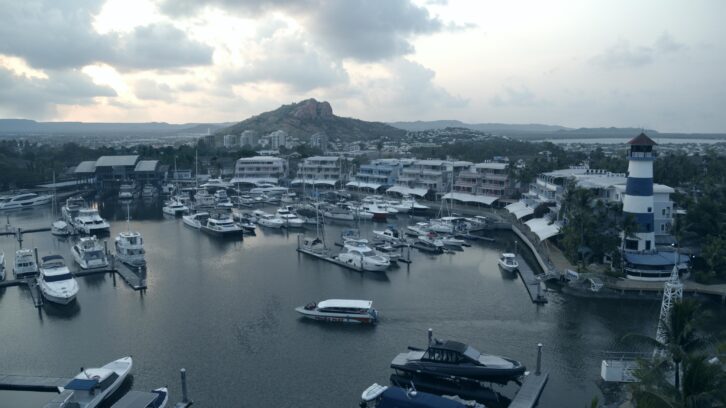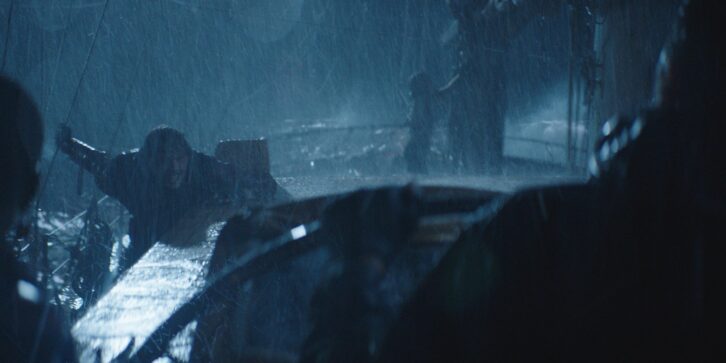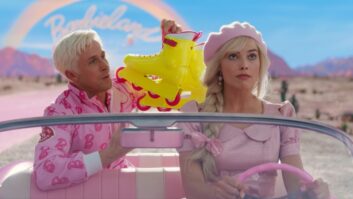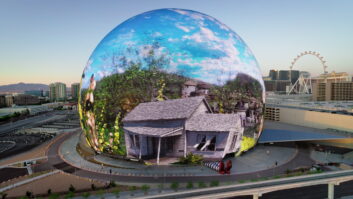Amid idyllic or luxurious backdrops, darkly satirical dramas are becoming more commonplace, exemplified by hits like Big Little Lies and The White Lotus. In this trend, narratives deftly interlace flashbacks, crafting captivating tales often initiated by deaths or crime scenes. No Escape adeptly adheres to this pattern, revealing its tale through a haunting opening scene that instantly captures audience attention from the outset.
Based on Lucy Clarke’s novel The Blue, the seven-part series on Paramount+ follows two best friends, Lana (Abigail Lawrie) and Kitty (Rhianne Barreto), who, in an attempt to escape their lives in the UK, decide to embark on a journey aboard a yacht (The Blue) in the Philippines. Before long, the vessel is discovered adrift in the waters of Queensland, devoid of any occupants. A modern-day Mary Celeste, if you will.
Developed by New Pictures and Viacom International Studios, the show’s aesthetics are enhanced with a healthy dose of VFX. Whilst it’s not unusual for a show or feature film to spread these shots across different vendors – particularly if there are specialist scenes – Vine FX was responsible for 500 shots across the entire season of No Escape.
Vine FX’s work was entirely focused on post production, so anything it introduced was to its own pipeline. “For us, having a solid background in high-end TV shows (War of the Worlds, The Lazarus Project, The Serpent) and strong connections with VFX producers really helped land us a spot on No Escape,” explains Laura Usaite, managing director, Vine FX. “We ended up working across set extensions, environments, 3D modelling, matte painting, and compositing.”
She explains that the role of a VFX supervisor is to make sure that the plates they receive are in as good a condition as possible for the work that needs to be done. Of course, what that entails varies from shoot to shoot, “but the core principles are usually the same”. That requires working very closely with DOPs and gaffers to refine what’s in a frame and how a particular scene might be approached.

“For example, if there’s a moving camera and we’re adding elements in post production then we’ll need to do a 3D camera track,” Usaite says. “That takes time, and can lead to unforeseen challenges. So, we’ll suggest approaches to get the best results possible. Something that can often be overlooked is reflections. Not just painting out cameras or crew reflections in post, but making sure that HDRIs are captured on set for adding correct environment reflections onto any CG elements. We’ll also record where light is coming from, what lens focal lengths are being used, and even the white balance of the camera. Everything that can help smooth out the work of post-production teams.”
Although set in the Pearl of the Orient, most of the in-camera work was done 1,400 miles west in Thailand. “The ocean assets we developed were designed to be flexible so they could be reused and reworked easily, and our joint-based approach to stingray movement was an innovative way of creating authenticity in the shots,” explains Usaite. “We had to extend and replace a lot of landscapes along with creating the look for the South East Asian oceans. Being given that level of creative input is very rewarding for us and helps to set the tone of the entire show. We also created most of the storm effects. Almost everything you see in intense weather scenes is CGI, and we had to develop a look that wouldn’t jolt viewers out of the story. Most of our work is invisible and covers environments, set extensions, CG creatures and more.”
In fact, Usaite is most proud of the work done to create the storm effects. “Water is notoriously difficult to simulate in CG, so we spent a lot of time in R&D to ensure our approach would work,” she says. “Our job is to make what we do invisible — an audience shouldn’t be pulled out of a good story by obvious visual effects. Good VFX can’t be seen and shouldn’t call attention to itself in context either.”

When it came to extending environments, Vine FX typically took a line from a natural landmark like a shoreline or mountain. “Then we add in digital matte paintings or full CG extensions that match the colour and tone of what was shot live,” Usaite adds. “It’s the same for the storm effects, rotoscoping around actors and adding water elements on top.”
When it was time for interior shots, like inside the airport, team Vine FX used greenscreens on TVs that could be easily swapped out for departure boards. “Green is often the best choice for these sorts of replacements because it’s furthest in colour from human skin so it’s easier to pull a key,” she says.
Working with inanimate or static structures, such as airports is one thing but when it comes to recreating the movement of sea creatures, it requires a rather different approach. For example, crafting dynamic movements for sea creatures presented a distinct challenge. “Developing realistic movements for the stingrays was an interesting process,” Usaite recalls. “They glide through water like birds, with elegant twists and turns. Capturing this grace in CG was both demanding and exhilarating. We developed rows of joints in our CG stingray models, manipulating these to create controlled sin waves, which were then mapped onto a secondary skeletal structure to drive their movements. This approach allowed our animators to seamlessly integrate several stingrays into a scene, adjusting their paths and speeds to match the shot’s requirements.”
No Escape is available on Paramount+.






